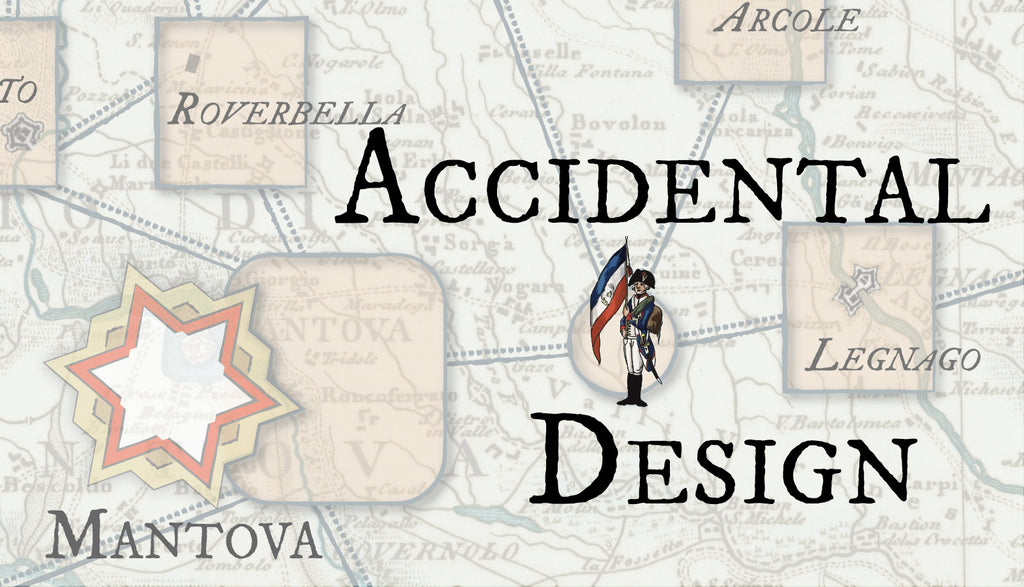Hollandazed: Thoughts, Ideas, and Miscellany — Siege of Mantua
ACCIDENTAL DESIGN (by Amabel Holland)

The battle system for my block game Siege of Mantua wasn't quite where I wanted it. Don't get me wrong. The basic construction was very sound. The thing worked, and worked well. But it sometimes felt just a little loose – in the way that a shirt can be just a little too big. The short version is that on your go, you spend Commands to advance and attack with your troops. Said troops are randomly pulled from a pool of counters to reflect the uncertain morale situation in a given battle; that pool shifts over time, morale degrading when...
BATTLES IN SIEGE OF MANTUA (by Amabel Holland)

One of the ideas at the core of Siege of Mantua is its bifurcated structure: maneuver at an operational scale, in which you strive to come to grips with the enemy, giving way to tactical battles. It requires two complementary but distinct skillsets. It also of course runs the danger of feeling like two different games, so it was important that I integrate them as much as possible – that the operational sets the parameters for the tactical, and the results of the tactical have consequences for the operational – making them distinct, yes, but also impossible to separate from...
PRACTICAL PROBLEMS: MANEUVER MODEL (by Amabel Holland)

I had a problem: I needed a compelling maneuver model that ticked off a lot of boxes but remained dirt simple. The game in question is my very first block game, Siege of Mantua, which takes as its subject the various Austrian attempts to relieve said siege, and how they were thoroughly trounced by this snot-nosed kid named Bonaparte. Specifically, I wanted the game's movement mechanics to account for (1) the efficacy of flanking attacks and the difficulty of coordinating converging columns, (2) the speed of smaller forces and the cumbersomeness of larger ones, (3) the advantages of interior lines,...
